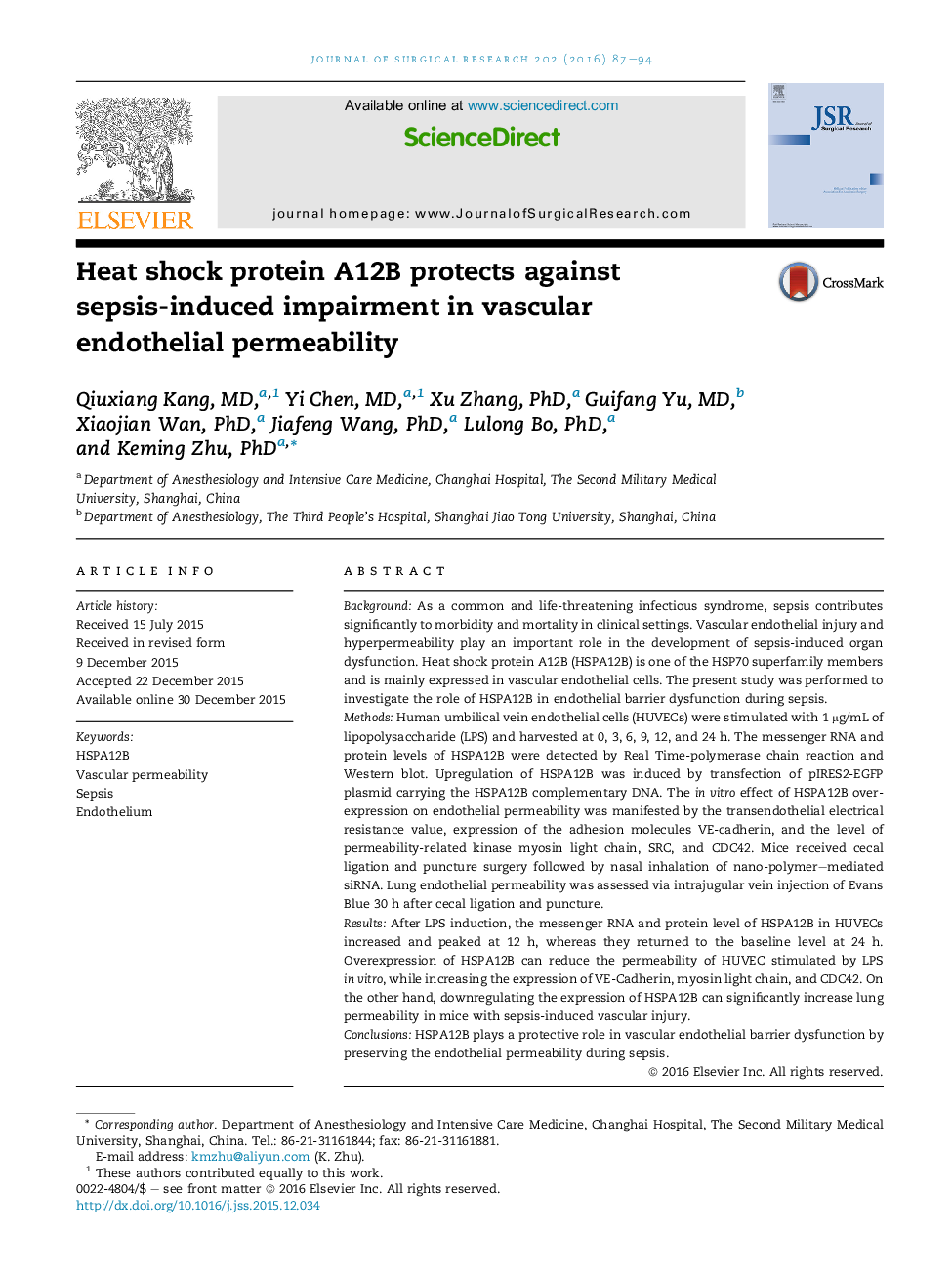| Article ID | Journal | Published Year | Pages | File Type |
|---|---|---|---|---|
| 4299359 | Journal of Surgical Research | 2016 | 8 Pages |
BackgroundAs a common and life-threatening infectious syndrome, sepsis contributes significantly to morbidity and mortality in clinical settings. Vascular endothelial injury and hyperpermeability play an important role in the development of sepsis-induced organ dysfunction. Heat shock protein A12B (HSPA12B) is one of the HSP70 superfamily members and is mainly expressed in vascular endothelial cells. The present study was performed to investigate the role of HSPA12B in endothelial barrier dysfunction during sepsis.MethodsHuman umbilical vein endothelial cells (HUVECs) were stimulated with 1 μg/mL of lipopolysaccharide (LPS) and harvested at 0, 3, 6, 9, 12, and 24 h. The messenger RNA and protein levels of HSPA12B were detected by Real Time-polymerase chain reaction and Western blot. Upregulation of HSPA12B was induced by transfection of pIRES2-EGFP plasmid carrying the HSPA12B complementary DNA. The in vitro effect of HSPA12B overexpression on endothelial permeability was manifested by the transendothelial electrical resistance value, expression of the adhesion molecules VE-cadherin, and the level of permeability-related kinase myosin light chain, SRC, and CDC42. Mice received cecal ligation and puncture surgery followed by nasal inhalation of nano-polymer–mediated siRNA. Lung endothelial permeability was assessed via intrajugular vein injection of Evans Blue 30 h after cecal ligation and puncture.ResultsAfter LPS induction, the messenger RNA and protein level of HSPA12B in HUVECs increased and peaked at 12 h, whereas they returned to the baseline level at 24 h. Overexpression of HSPA12B can reduce the permeability of HUVEC stimulated by LPS in vitro, while increasing the expression of VE-Cadherin, myosin light chain, and CDC42. On the other hand, downregulating the expression of HSPA12B can significantly increase lung permeability in mice with sepsis-induced vascular injury.ConclusionsHSPA12B plays a protective role in vascular endothelial barrier dysfunction by preserving the endothelial permeability during sepsis.
